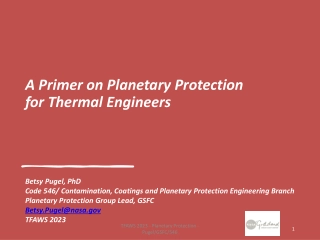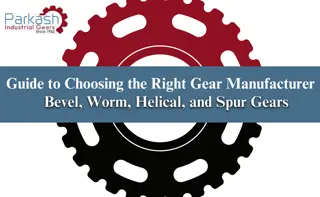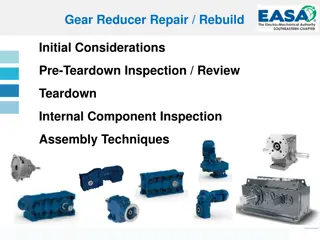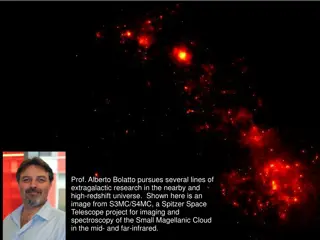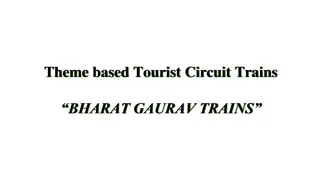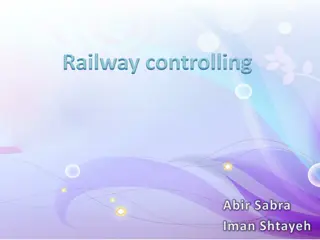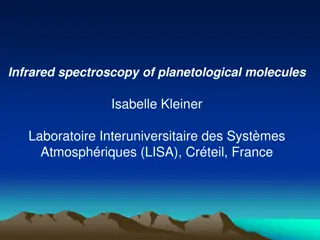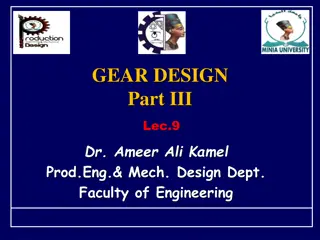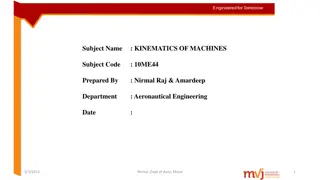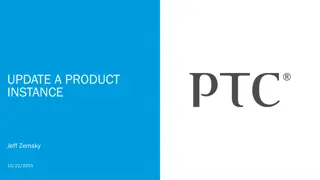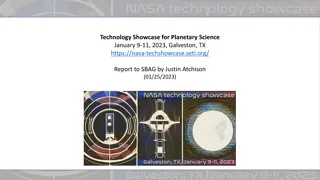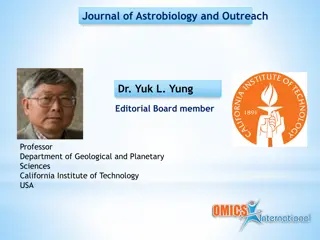Understanding Planetary Gear Trains in Hybrid Powertrains
Hybrid powertrains utilize planetary gear trains to achieve different operating modes such as motor-alone, engine-alone, combined mode, and more. These gear trains consist of planetary gears orbiting around a central axis, enabling multiple shaft configurations for input and output. Understanding the speed/torque relationships within these gear trains is crucial for efficient power distribution in hybrid vehicles.
Download Presentation

Please find below an Image/Link to download the presentation.
The content on the website is provided AS IS for your information and personal use only. It may not be sold, licensed, or shared on other websites without obtaining consent from the author. Download presentation by click this link. If you encounter any issues during the download, it is possible that the publisher has removed the file from their server.
E N D
Presentation Transcript
Advanced HEV Architectures and Dynamics of HEV Powertrain
There architectures which are in use. The general goals of a hybrid transmission design are to realize the different operating modes of a hybrid vehicle system, such as the capability to run motor- alone mode, engine-alone mode, combined mode, power split mode, regenerative braking mode, and stationary charging operations. are various hybrid powertrain
In addition, it is important to be able to control engine power and operations so that better fuel economy and lower emissions can be achieved for all ranges of vehicle speeds and power demands. speed during hybrid The system design should be easy to implement and control, and bear low overall cost.
Principle of Planetary Gears Many hybrids in the marketplace today use a planetary gear train to replace the traditional automatic transmission such as continuous variable transmission (CVT). The engine, motor, and generator together transmission that can continuous variable transmission, known as e- CVT. form provide a type electric of
A planetary gear train has one or more planetary gears orbiting around a sun gear or central axis of the train. Therefore, there is a moving axis in planetary gear trains (carrier). A pictorial representation of a planetary train is shown in the following Figure. As can be seen, there are three axes in total: the sun axis, planet carrier axis, and ring axis. The possible relative motions among these axes make planetary gear trains very interesting.
Among the three shafts of a planetary gear train, any shaft can be treated as the input shaft or output shaft. Hence, a combination will be either two input shafts and one output shaft, or one input shaft and two output shafts. In some applications, one of the gear sets is grounded so that only one input and one output is available.
To understand the speed/torque relationships inside a planetary gear train, we can first look at the relationship between a simple set of gears. The linear velocity of the edge of a wheel relative to its center is defined as follows:
In simple gears, two wheels are put in contact with each other. The two wheels will travel at the same linear speeds. Hence, the speed relationship of the two wheels is:
The relationship between a gears radius and a gear s tooth number can be written as 2 ri= pNi, where N is the tooth number and p is the pitch (arc distance between two adjunct teeth). If gear i and gear j are in contact, then they must have the same circular pitch p in order to transfer the movement. Therefore, we have:
This expression is valid for any gear with an angular movement with respect to one point. For the planetary gear train shown in following Figure, there are two contact points: point A between the sun gear and the planet gear; and point B between the planet gear and the ring gear. The linear velocities of the contact points can be obtained using two different paths for each point:
For point A: For point B:
The directions of the various components rotation have been movement of the planetary train is feasible. Thus, we have the following two equations: chosen so that the
In order to make use of the expression easier, the clockwise direction will be considered positive and the anticlockwise negative. As can be seen in the above figure, not all the angular velocities have the same direction. So, we can rewrite the above equation by including the correct reference direction: direction
As mentioned earlier, two inputs are required before a planetary gear set can be uniquely analyzed. If a gear is grounded, its velocity is zero; nevertheless this zero velocity constitutes one of the input values.
Toyota Prius and Ford Escape Hybrid Powertrain The Toyota Prius and the Ford Escape use similar powertrain transmissions. There are an engine, two electric machines, and a planetary gear train in the transmission. The engine is connected to the carrier, electric motor MG1 is connected to the ring gear as well as the final drive, and the generator MG2 is connected to the sun gear. Hence, the speed and torque relationships are:
where e, m, and gare the speed of the engine, the motor, and the generator, respectively.
Since there is no clutch, the planetary gear is always running whenever the vehicle is moving. It can be seen from the above equation and the diagram of the powertrain that the speed of the motor is directly proportional to the linear speed of the vehicle through the radius of the front tires and the final drive ratio. The ring gear speed and the motor speed are identical.
During normal operation (e-CVT or acceleration mode), the speed of the engine is controlled by the torque on the generator. Basically, the generator power is adjusted so that the engine turns at the desired speed. Hence, by adjusting the generator speed, the engine can operate at a relatively constant speed while the vehicle is driven at different speeds.
In the Prius, the engine is limited from 0 to 4000 rpm. The motor is limited by a small negative revolution per minute for reverse and up to 6000 rpm ( 103 mph or 165 km/h). The generator is limited to 5500 rpm. The ring gear and sun gear each have 78 and 30 teeth respectively. The four planetary gears each have 23 teeth. The final drive ratio is 3.93 and the wheel radius is 0.287 m. Hence, e= 0.7222 m + 0.2778 g.
The control strategy is as follows. For a given vehicle speed, and a desired output power determined by the drive cycle, or driver inputs, the desired operating point of the engine can be determined based on the maximum efficiency curve of the engine. From the vehicle speed and engine speed, the desired generator speed can then be calculated. The generator speed is regulated through the inverter by controlling the output power of the generator (either as generator or motor). Motor torque is determined by looking at the difference between the total vehicle torque demand and the engine torque that is delivered to the ring gear. The battery provides power to the motors along with the electricity generated by the engine.
Example 1 Consider a planetary gear train-based transmission with an engine (carrier) providing 100kW at 2000 rpm optimum operating point. The ring gear has 72 teeth and the sun gear has 30 teeth. The final drive ratio is 3.7865, and the wheel radius 0.283 m. (i) For a vehicle speed of 45 mph or 20.6 m/s, the power demand under heavy acceleration at this speed is 120 kW. Find the speed and power for each component, assuming no losses. (ii) For a vehicle speed of 70 mph, or 32.7 m/s, when cruising the power demand is 70 kW. Calculate the speed and power of each component.
GM Two-Mode Hybrid Transmission The GM two-mode hybrid electric powertrain (or transmission) is shown in the following Figure. This powertrain consists of two planetary gear sets P1 and P2; two electric machines MG1 and MG2; and three clutches C1, C2, and C3. The powertrain is capable of providing e- CVT for both high-speed and low-speed operations, hence two-mode. The two-mode concept can be referred and compared to the Toyota and Ford hybrid electric vehicle powertrain whose operation is limited to only one mode. In principle, two-mode operation can provide more flexibility for transmission drivability, improve vehicle performance, and improve fuel economy. control, increase
Operating Principle of the Two-Mode Powertrain In the GM two-mode hybrid transmission, the engine is connected to the ring gear of planetary gear P1 through clutch C1. Electric machine MG1 is connected to the sun gear of P1. The carrier of P1 is connected to the final drive through the output shaft. MG2 is connected to the sun gear of planetary P2. The carrier of P2 is also connected to the output shaft. There is a dual-position clutch that connects either the ring gear of P2 to ground, or the ring gear of P2 to the shaft of MG1. Through control of C2 and C3, different operating modes can be realized. The engine in this system can be kept at the best speed and torque combinations to achieve the best fuel economy by controlling the input/output of the two electric machines. The engine may be stopped or idle during vehicle launch and backup, as well as at low power demand. At cruising conditions, the engine efficiency is further enhanced by cylinder deactivation, also known as Active Fuel Management (GM) or the Multi-Displacement System (Chrysler). Note that this discussion is generic and may not be the same as those implemented in a real vehicle by the automobile manufacturers.
In the following derivations, is the angular velocity, T is torque, N is the number of teeth of a gear, and P is power. Subscript s stands for sun gear, r for ring gear, c for planetary carrier, 1 for planetary gear set 1, 2 for planetary gear set 2, g for motor/generator 1, motor/generator 2, or MG2, and out is for output or final drive. or MG1, m for
Mode 0: Vehicle Launch and Backup During vehicle launch and backup, the system is operating in motor-alone mode (Mode 0). C2 is open and C3 is engaged to ground the ring gear of P2. In this mode, there are two possibilities for engine operation, either off or idle at cranking speed (approximately 800 rpm) by adjusting MG1 speed. MG1 torque is not transmitted to the final drive. MG2 provides the needed torque to launch the vehicle forward or backward.
In the final implementation, C1 was eliminated. Therefore, the engine is always connected to the ring gear of P1. Since the carrier of P1 is always connected to the final drive, MG1 needs to be controlled so that the engine is either at zero or at a certain speed:
If the engine is maintained at 800 rpm without fuel injection, there are still friction losses but the engine can be ignited at any time without delay. If the engine is controlled to be at zero speed, then MG1 will need to be controlled so that the ring gear of P1 reaches 800 rpm before the engine can be started. In this case, the engine is controlled by cylinder deactivation.
Mode 1: Low Range Mode 1 is also called the low-range or low- speed mode. In this mode, C1 is engaged, C2 is open, and C3 is engaged. The second planetary gear works as a speed reduction gear for MG2. The engine may be controlled by partial cylinder deactivation to further save fuel and reduce emissions based on vehicle power demand. The torque and speed relationships during steady state operations can be expressed as:
The different operations in Mode 1 can be described as follows:
Mode 2: High Range Mode 2 is also called the high-range or high- speed mode. C1 is engaged, C2 is engaged, but C3 is open. In this mode, the sun gear of P1 is connected to the ring gear of P2 through MG1, that is, MG1, S1, and R2 will have the same speed.
In this operating mode, the engine is generally kept at a constant speed to achieve the best fuel economy. MG1 and MG2 are controlled in either motoring or generating mode depending on the vehicle speed and power demand. The torque and speed relationships during steady state operation are as follows:
Mode 3: Regenerative Braking During regenerative braking, C1 is open, C2 is open, and C3 is engaged to ground the ring gear of P2 (Mode 3). The engine and MG1 are off or freewheel. MG2 provides the needed braking torque for the vehicle and, at the same time, stores regenerative braking energy in the onboard battery. The speed/torque relationship is:
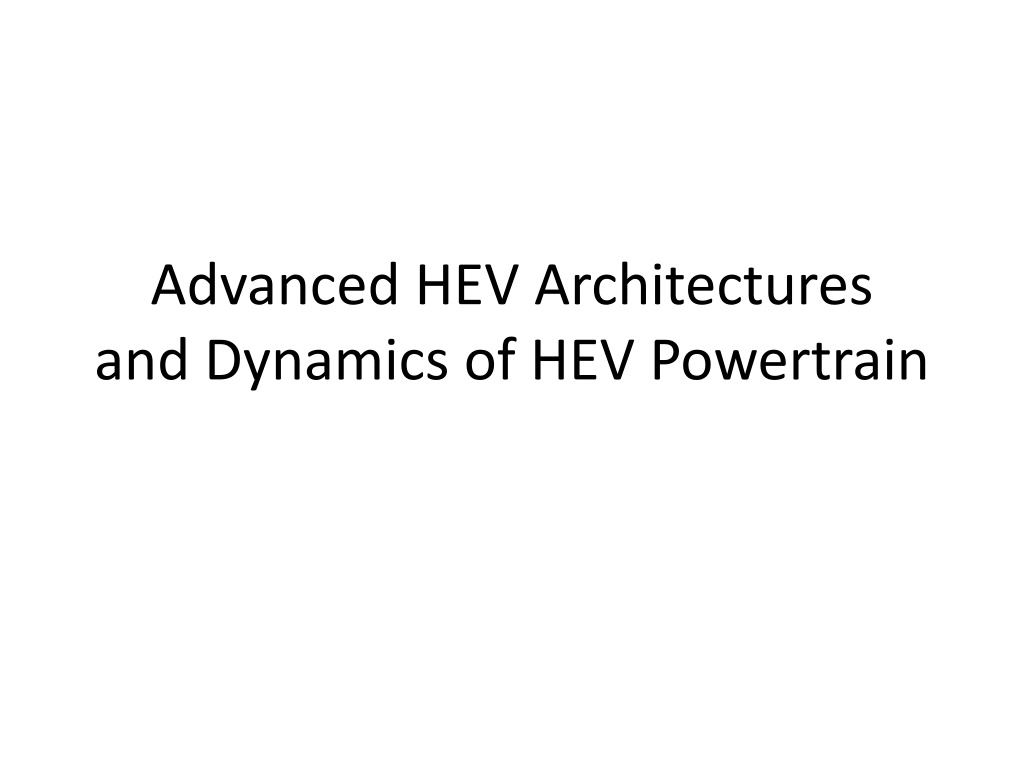

![❤[PDF]⚡ Planetary Ring Systems (Springer Praxis Books)](/thumb/21506/pdf-planetary-ring-systems-springer-praxis-books.jpg)
